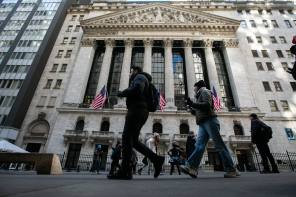

Investors backing the European recovery have struggled to dispel concerns about the continent’s banks after the rescue of Spanish lender Banco Popular prompted fresh questions over the sector’s health.
Managers have increased their backing for European stocks this year amid improving fundamentals and fading political risks, and index performance has been strong. Year to date the FTSE Europe ex UK has returned nearly 15 per cent in sterling terms, outpacing UK and global counterparts.
However, the rescue of Banco Popular, acquired by Santander for €1 after the European Central Bank (ECB) dubbed it “failing or likely to fail” due to liquidity problems, has reignited doubts about European financials.
Popular’s contingent convertible (Coco) bonds were written down following the deal. While this has not affected the wider market for the bonds, other Spanish lenders, including Liberbank, have seen their debt and equity come under pressure.
James Sullivan, Coram Asset Management investment director, said the potential for further contagion and doubts about the rescue justified caution.
He said: “We would question whether anything has been resolved. The non-performing loans and toxic assets still exist. They just happen to now be on Santander’s balance sheet. If we were convinced this was an isolated incident, we’d move on. But our concerns remain. A number of smaller Italian banks are on the fringes of insolvency and there appears to be no domestic bank with sufficient capital to perform a Santander-esque type of rescue. The government is also severely financially impinged, so the chances of any state bailout look slim.”
He added: “If we’re looking for a potential bear market catalyst, the European banking system is the protagonist”.
Stephen Brown, a European economist for Capital Economics, added that recent events highlighted “pockets of fragility” in the broader eurozone banking sector. Chris Higham, a bond manager at Aviva Investors who mainly buys bank debt in the UK and US, echoed that. “We are still cautiously positioned regarding European banks,” he said.
“We accept that they continue to raise capital and are largely de-risking, but there’s more than €1trn [£783bn] of non-performing loans. From a lender’s perspective, we are very much beholden to the regulator. It’s the regulator’s discretion in Europe as to whether the bank has reached a point of non-viability. It’s very difficult for investors to know how that situation with a bank is unfolding.”
Banco Popular has faced substantial difficulties. The lender has reported some €37.4bn in non-performing assets, with losses of almost €3.5bn in the financial year of 2016.
The sector may be aided by a wider economic recovery in Europe. According to Eurostat, the European Commission’s statistics agency, seasonally adjusted GDP for the 28 EU countries rose by 2.1 per cent in the first quarter of 2017.
Filippo Alloatti, a credit analyst for Hermes, said the existence of a process for bank rescues also provided some reassurance to investors.
He said: “They have a blueprint to use in these situations.”
Vincent Juvyns, global market strategist at JPMorgan Asset Management, has continued to back the sector, which he has tipped to benefit from expected monetary tightening in Europe.
He said: “Valuations remain attractive. We [also] see inflation picking up. The sector will do well if interest rates increase.”
KEY NUMBERS
€1
Symbolic amount spent by Santander on Banco Popular
€37.4bn
Amount of non-performing assets reported by the troubled lender



